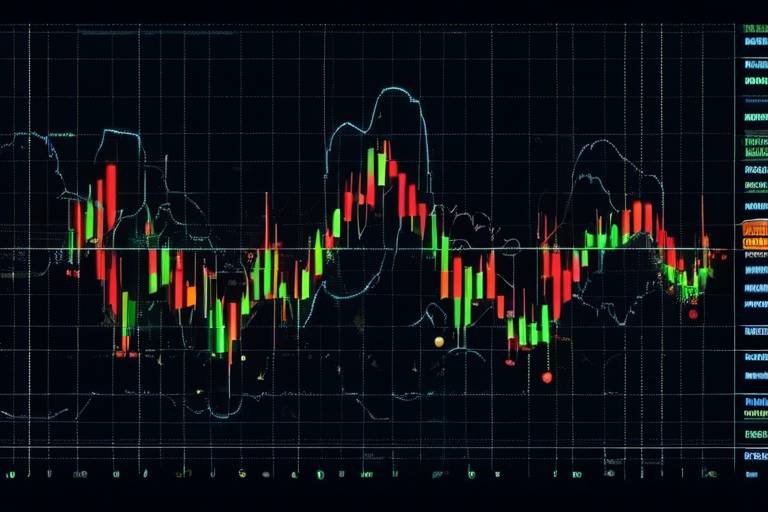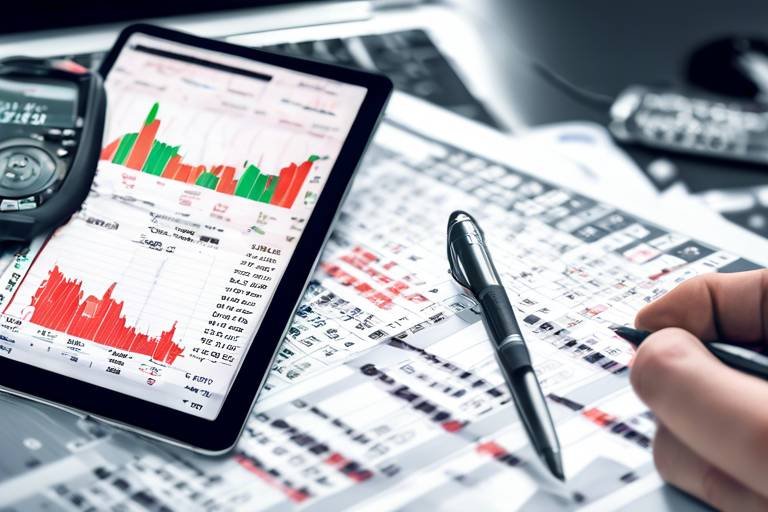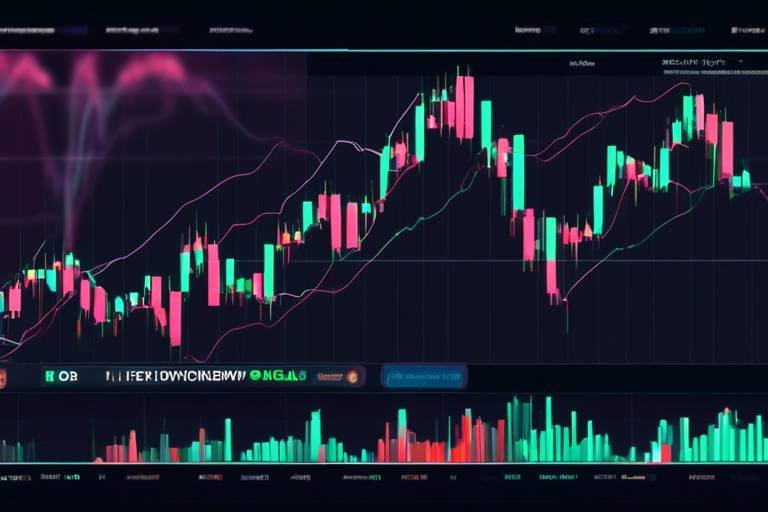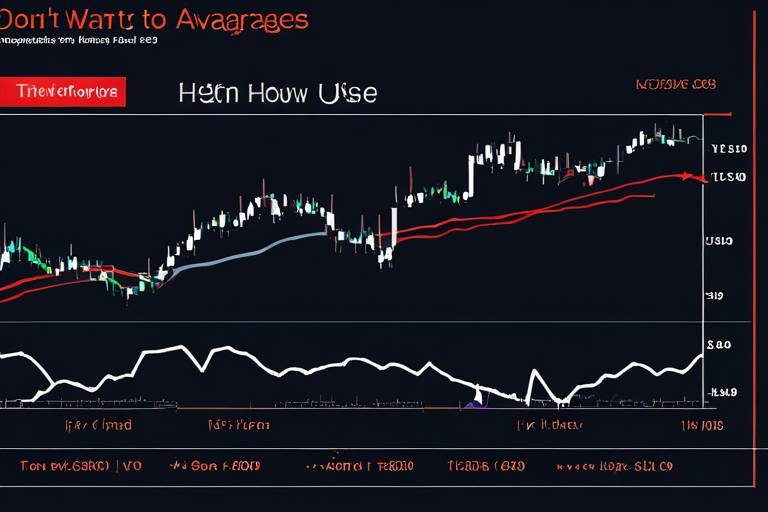How to Identify Key Market Indicators for Trading
This article explores essential market indicators that traders use to make informed decisions. Understanding these indicators can enhance trading strategies and improve overall market analysis.
Market indicators are statistical measures that provide insights into market trends and conditions. They help traders assess potential price movements and make informed trading decisions based on data-driven analysis. Imagine you're a navigator on a ship, sailing through unpredictable waters. Market indicators are like your compass, guiding you through the tumultuous waves of the stock market. Without them, you might find yourself lost or, worse, headed straight into a storm.
There are various types of market indicators, including leading, lagging, and coincident indicators. Each type serves a unique purpose in analyzing market trends and predicting future movements. Think of them as different lenses through which you can view the market landscape. Some indicators can forecast the future, while others confirm the past, helping you paint a complete picture of market dynamics.
Leading indicators predict future price movements and market trends. These indicators, such as stock market indices and consumer sentiment, can provide early signals for traders to act upon. They are like the early birds that sing before dawn, giving you a hint that the sun is about to rise. By paying attention to these indicators, traders can position themselves advantageously before significant market shifts occur.
Common leading indicators include the Purchasing Managers' Index (PMI) and the Consumer Confidence Index (CCI). These metrics help traders gauge economic activity and potential market shifts ahead of time. For instance, a rising PMI indicates that manufacturers are optimistic about future sales, which can lead to increased stock prices. Such insights can be invaluable for traders looking to capitalize on upcoming market movements.
To utilize leading indicators effectively, traders should combine them with other analysis tools. This approach enhances the reliability of predictions and minimizes the risk of false signals. Consider it like assembling a jigsaw puzzle; each piece of information adds clarity to the overall picture. By integrating leading indicators with technical analysis tools, traders can create a robust strategy that stands the test of time.
Lagging indicators provide insights based on historical data and trends. They are useful for confirming existing market conditions and validating trading strategies after price movements have occurred. Think of lagging indicators as the rearview mirror in your car; they help you understand where you've been and confirm the direction you're heading. While they may not predict the future, they are essential for ensuring that your trading strategy aligns with current market realities.
Technical analysis tools, such as moving averages and relative strength index (RSI), play a crucial role in interpreting market indicators. These tools help traders analyze price patterns and market momentum effectively. They act as the toolkit for traders, enabling them to dissect market data and make informed decisions.
Moving averages smooth out price data to identify trends over specific periods. They are essential for traders to recognize potential entry and exit points in their trading strategies. Imagine you're trying to catch a wave while surfing; moving averages help you gauge the right moment to ride the wave, ensuring that you don’t wipe out. By analyzing the average price over a set time frame, traders can make more strategic decisions about when to enter or exit trades.
The RSI is a momentum oscillator that measures the speed and change of price movements. It helps traders identify overbought or oversold conditions in the market, providing valuable insights for decision-making. Picture the RSI as a mood ring for the market; it tells you when traders are feeling euphoric (overbought) or anxious (oversold). By understanding these emotional states, traders can better time their trades and capitalize on market fluctuations.
- What are market indicators? Market indicators are statistical measures that help traders analyze market conditions and trends.
- How do leading indicators differ from lagging indicators? Leading indicators predict future market movements, while lagging indicators confirm trends based on historical data.
- Can I rely solely on one type of indicator? It's advisable to use a combination of indicators for a more comprehensive market analysis.
- What role do technical analysis tools play? Technical analysis tools help traders interpret market data and identify trading opportunities.
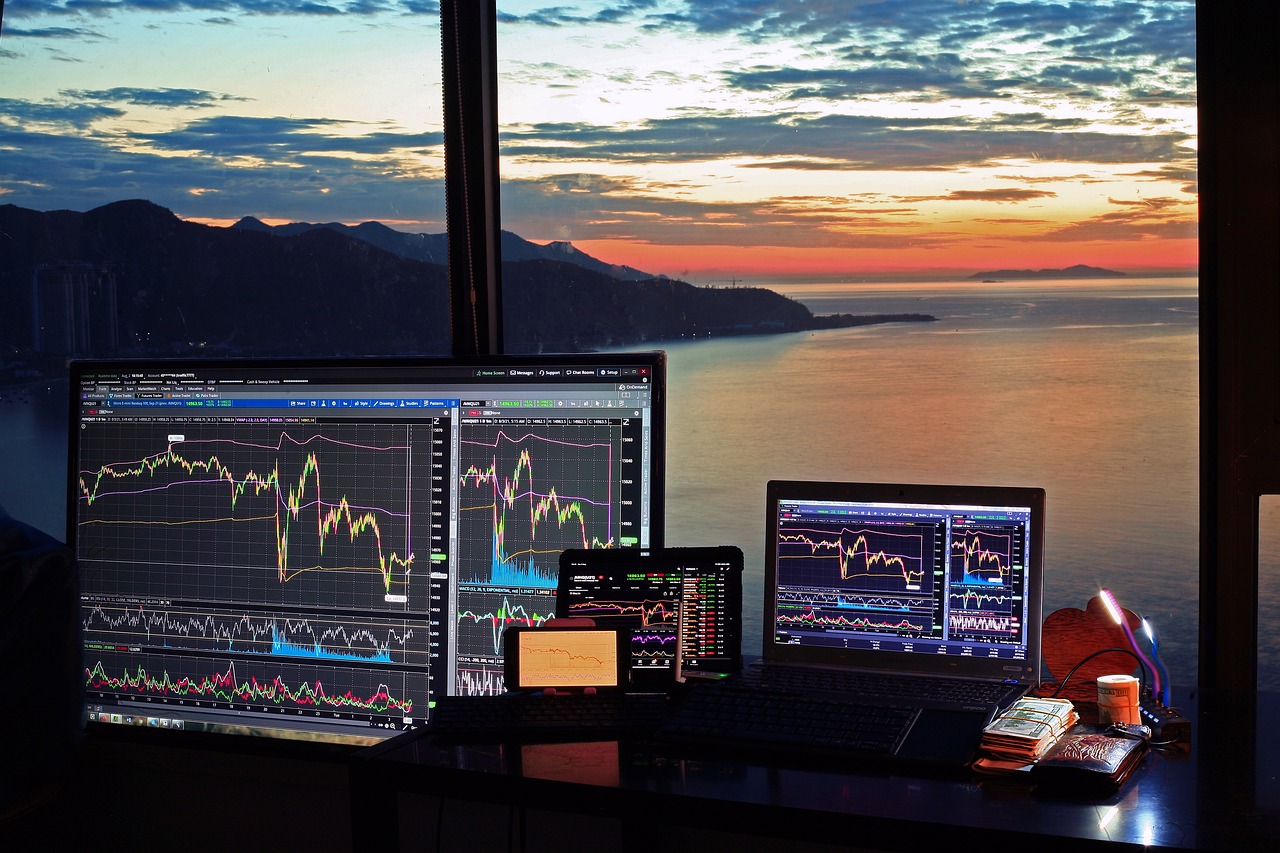
Understanding Market Indicators
Market indicators are like the compass for traders navigating the vast ocean of financial markets. They are statistical measures that provide crucial insights into market trends and conditions. Think of them as the weather forecasts for trading; just as a sailor checks the weather before setting sail, traders analyze these indicators to make informed decisions. By examining these indicators, traders can assess potential price movements and develop strategies that are grounded in data-driven analysis.
These indicators can reveal a lot about the market's current state and its potential direction. By understanding the nuances of these indicators, traders can position themselves to seize opportunities and mitigate risks. For example, if a trader notices a significant uptick in the Consumer Confidence Index, it might suggest that consumers are feeling optimistic about the economy, potentially leading to increased spending and positively affecting stock prices. Conversely, a decline in such indicators could signal caution.
In the world of trading, it's not just about spotting trends; it’s about understanding the underlying factors that drive those trends. Market indicators serve as signposts that guide traders through the complexities of market behavior. They can be broadly categorized into three types: leading, lagging, and coincident indicators. Each type has its unique role, much like different instruments in an orchestra working together to create a harmonious performance.
| Type of Indicator | Description | Example |
|---|---|---|
| Leading Indicators | Predict future price movements and market trends. | Purchasing Managers' Index (PMI) |
| Lagging Indicators | Provide insights based on historical data and trends. | Moving Averages |
| Coincident Indicators | Move in line with the economy, confirming trends. | Gross Domestic Product (GDP) |
To truly harness the power of market indicators, traders must not only identify them but also understand how to interpret the signals they provide. It's essential to combine these indicators with other analysis tools, like technical indicators, to enhance the reliability of predictions. This combination can help traders avoid the pitfalls of false signals, which can be as treacherous as navigating through a storm without a map.
In conclusion, understanding market indicators is a fundamental skill for any trader. They provide a framework for analyzing market conditions and predicting future movements. By mastering these indicators and their implications, traders can enhance their strategies and improve their chances of success in the ever-changing landscape of financial markets.

Types of Market Indicators
When it comes to trading, understanding the different is crucial. These indicators can be classified into three main categories: leading, lagging, and coincident indicators. Each type serves a distinct purpose in the realm of market analysis, enabling traders to make informed decisions based on various data points. Let's dive deeper into these categories and see how they can enhance your trading strategies.
Leading indicators are like the early birds of the market; they signal potential future movements before they actually happen. Imagine trying to guess the weather—if you see dark clouds gathering, you might predict rain before it starts pouring. Similarly, leading indicators such as the Purchasing Managers' Index (PMI) and the Consumer Confidence Index (CCI) can provide traders with early warnings about economic shifts. These indicators gauge the overall health of the economy and consumer sentiment, allowing traders to position themselves advantageously.
On the flip side, we have lagging indicators. These are akin to looking in the rearview mirror while driving; they help confirm trends that have already occurred. For instance, moving averages and the Unemployment Rate are classic examples of lagging indicators. They provide valuable insights based on historical data, helping traders validate their strategies after price movements have taken place. While they may not predict future changes, they certainly help in understanding past trends and market behavior.
Lastly, we have coincident indicators, which operate in real-time. They move in tandem with the economy, providing insights into the current state of market conditions. A prime example of a coincident indicator is the Gross Domestic Product (GDP). As the economy grows or contracts, GDP reflects those changes almost immediately, giving traders a snapshot of where the market stands at any given moment.
To summarize, understanding these types of market indicators can significantly enhance your trading strategy. By utilizing a combination of leading, lagging, and coincident indicators, traders can develop a well-rounded approach to market analysis. This multifaceted strategy not only improves decision-making but also helps mitigate risks associated with trading.
| Type of Indicator | Description | Examples |
|---|---|---|
| Leading Indicators | Predict future price movements and trends. | PMI, CCI |
| Lagging Indicators | Confirm trends based on historical data. | Moving Averages, Unemployment Rate |
| Coincident Indicators | Reflect current economic conditions. | GDP |

Leading Indicators
Leading indicators are like the early birds of the trading world; they give traders a sneak peek into potential market movements before they actually happen. Imagine standing at a train station, waiting for a train to arrive. As you see the lights of the train approaching in the distance, you can prepare yourself for its arrival. Similarly, leading indicators provide early signals that can help traders make informed decisions. These indicators are crucial for anyone looking to get ahead in the market, as they can often predict future price movements and shifts in market trends.
Some of the most prominent leading indicators include the Purchasing Managers' Index (PMI) and the Consumer Confidence Index (CCI). The PMI tracks the economic health of the manufacturing sector, while the CCI measures how optimistic or pessimistic consumers are about the economy's future. By analyzing these indicators, traders can gauge the overall economic climate and make predictions about potential market shifts. For instance, a rising PMI typically suggests that the economy is expanding, which may lead to increased stock prices.
However, relying solely on leading indicators can be a bit like trying to read the weather based on just one cloud in the sky. To enhance the accuracy of predictions, it's essential to combine leading indicators with other analytical tools. This multifaceted approach can help minimize the risk of false signals and provide a more comprehensive view of market conditions. For example, if the PMI is rising but other indicators, like the unemployment rate, are also showing negative trends, it might be wise to tread carefully before making any significant trading decisions.
In practice, using leading indicators effectively means continuously monitoring them and being ready to adapt your trading strategies based on the insights they provide. It's about staying proactive rather than reactive. As a trader, you should always be on the lookout for shifts in these indicators, as they can signal the perfect opportunity to buy or sell. Just like a surfer watching the waves, you need to catch the right moment to ride the market's momentum.
In summary, leading indicators are invaluable tools that can give traders a head start in the ever-changing landscape of the financial markets. By understanding and effectively utilizing these indicators, traders can enhance their strategies, reduce risks, and ultimately improve their chances of success.

Examples of Leading Indicators
Leading indicators are crucial tools for traders who want to stay ahead of the market curve. They act like a compass, guiding traders toward potential future price movements before they actually occur. One of the most recognized leading indicators is the Purchasing Managers' Index (PMI). This index measures the economic health of the manufacturing sector by surveying purchasing managers about their current and future business conditions. A PMI reading above 50 typically indicates expansion, while a reading below 50 suggests contraction.
Another vital leading indicator is the Consumer Confidence Index (CCI). This index gauges how optimistic or pessimistic consumers feel about the economy's current and future state. A high CCI can signal increased consumer spending, which often leads to economic growth and can push stock prices higher. Conversely, a low CCI may indicate that consumers are tightening their belts, which could foreshadow a downturn.
To further illustrate the significance of these indicators, consider the following table that compares the PMI and CCI:
| Indicator | Type | What It Measures | Implications for Traders |
|---|---|---|---|
| Purchasing Managers' Index (PMI) | Leading | Economic health of the manufacturing sector | Signals potential economic expansion or contraction |
| Consumer Confidence Index (CCI) | Leading | Consumer sentiment regarding the economy | Indicates potential consumer spending trends |
In addition to PMI and CCI, other leading indicators include stock market indices and housing starts. Stock market indices, such as the S&P 500, often reflect investor sentiment and can predict future economic activity. When indices rise, it often correlates with increased business investment and consumer spending. On the other hand, housing starts measure the number of new residential construction projects. An increase in housing starts suggests a robust economy, as it indicates consumer confidence and spending in the housing market.
Utilizing these leading indicators effectively requires a keen understanding of their implications and the broader economic context. Traders should not rely solely on one indicator; instead, they should consider a combination of multiple indicators to enhance their predictive accuracy. For example, pairing the PMI with the CCI can provide a more comprehensive view of economic trends. By analyzing these indicators together, traders can develop a more nuanced trading strategy that accounts for potential market shifts.
In conclusion, leading indicators like the PMI, CCI, stock market indices, and housing starts serve as essential tools for traders looking to navigate the complexities of the market. By keeping an eye on these indicators, traders can make informed decisions and position themselves advantageously in the ever-evolving trading landscape.
- What are leading indicators? Leading indicators are statistical measures that predict future price movements and market trends, helping traders make informed decisions.
- How do I use leading indicators? Combine leading indicators with other analysis tools for more reliable predictions and to minimize the risk of false signals.
- What is the difference between leading and lagging indicators? Leading indicators predict future movements, while lagging indicators confirm trends based on historical data.

Using Leading Indicators Effectively
To truly harness the power of leading indicators, traders must adopt a strategic approach that goes beyond mere observation. It’s not just about looking at the numbers; it's about understanding their implications and integrating them into a broader trading strategy. Think of leading indicators as the compass guiding you through the unpredictable waters of the market. They provide early signals, but their effectiveness is amplified when combined with other analytical tools.
One effective method is to utilize a combination of leading indicators alongside lagging indicators. This dual approach can help confirm signals and minimize the risk of making decisions based on false alarms. For instance, if a leading indicator like the Purchasing Managers' Index (PMI) suggests a potential upward trend, a trader might look for confirmation from a lagging indicator, such as the Moving Average, to validate that trend before making a move.
Moreover, it’s essential to stay updated on market news and economic events that can impact these indicators. For example, if consumer sentiment is high, it might indicate a future increase in spending, but unexpected geopolitical events or economic reports can quickly shift that sentiment. Therefore, a trader should always be on the lookout for news releases and economic data that can affect market conditions.
Another critical aspect of using leading indicators effectively is understanding their limitations. While they can predict potential market movements, they are not infallible. Traders should be aware that leading indicators can sometimes give false signals, leading to premature trading decisions. To mitigate this risk, one practical approach is to establish a clear set of criteria for entering and exiting trades based on these indicators. This could involve setting specific thresholds or using additional confirmation tools, such as technical analysis methods.
In summary, the key to effectively using leading indicators lies in their integration with other analytical tools, staying informed about market dynamics, and recognizing their limitations. By doing so, traders can enhance their decision-making process and improve their chances of success in the ever-changing trading landscape.
- What are leading indicators? Leading indicators are statistical measures that predict future price movements and market trends, providing traders with early signals to act upon.
- How can I combine leading indicators with other tools? By using leading indicators in conjunction with lagging indicators or technical analysis tools like moving averages, traders can confirm signals and reduce the risk of false positives.
- Are leading indicators always reliable? While they provide valuable insights, leading indicators can sometimes give false signals. It’s crucial to use them as part of a broader strategy and not rely solely on their predictions.

Lagging Indicators
When it comes to trading, understanding is crucial for making informed decisions. Unlike leading indicators, which attempt to predict future market movements, lagging indicators provide insights based on historical data. Think of them as the rearview mirror of trading; they help you confirm where you've been rather than where you're headed. This can be incredibly useful for validating your trading strategies after price movements have occurred.
Lagging indicators are typically used to confirm trends and patterns that have already developed in the market. By analyzing these indicators, traders can get a clearer picture of the market's current state. For example, if you see a consistent upward trend in the price of a stock and the lagging indicators confirm this trend, you might feel more confident in your decision to invest. However, it's important to remember that these indicators are not predictive; they are reactive. They help you understand what has happened in the market, providing a sense of security in your trading decisions.
Some common examples of lagging indicators include:
- Moving Averages: These smooth out price data over a specified period, helping traders identify trends and potential reversal points.
- MACD (Moving Average Convergence Divergence): This indicator helps traders understand momentum by comparing two moving averages, allowing for the identification of bullish and bearish trends.
- Average Directional Index (ADX): This tool measures the strength of a trend, helping traders determine whether to enter or exit a position.
By employing these lagging indicators, traders can gain a more comprehensive understanding of market dynamics. However, relying solely on lagging indicators can be risky. They often lag behind the market movements, which means that by the time you receive a signal, the opportunity may have already passed. Therefore, it is advisable to use lagging indicators in conjunction with leading indicators and other analysis tools to create a well-rounded trading strategy.
In summary, lagging indicators play a vital role in confirming market trends and validating trading strategies. While they provide valuable insights based on historical data, they should not be the only tools in a trader's toolbox. Combining them with leading indicators and technical analysis tools can enhance your trading effectiveness and help you navigate the often tumultuous waters of the financial markets.
- What are lagging indicators? Lagging indicators are tools that provide insights based on historical data, helping traders confirm existing market trends.
- How do lagging indicators differ from leading indicators? Lagging indicators react to market movements, while leading indicators attempt to predict future price changes.
- Can I rely solely on lagging indicators for trading decisions? It's not advisable to rely solely on lagging indicators as they may cause you to miss opportunities; they should be used in conjunction with other indicators.
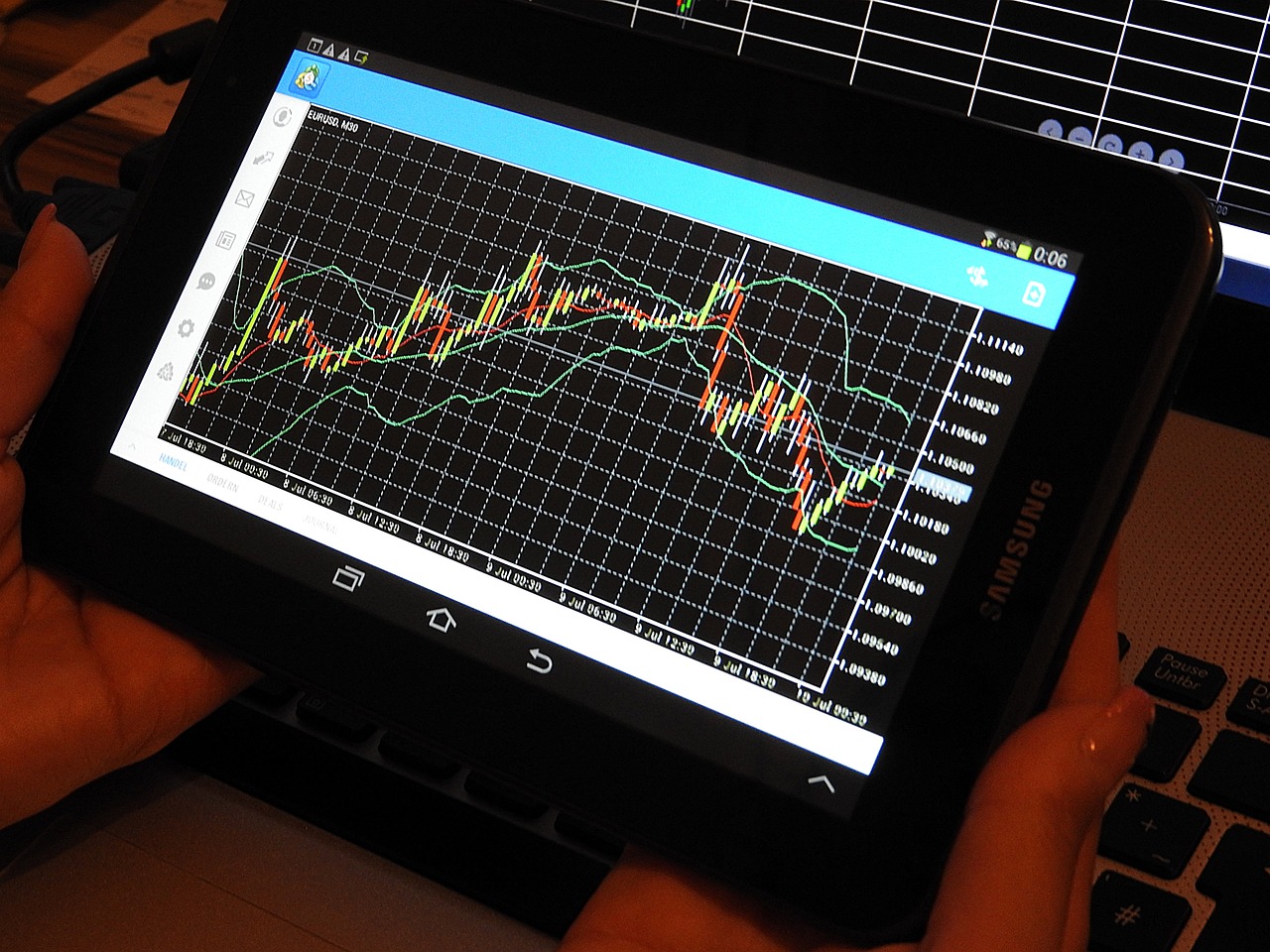
Technical Analysis Tools
When it comes to trading, understanding market indicators is just the tip of the iceberg. To truly navigate the turbulent waters of the financial markets, traders need to equip themselves with . These tools are like a compass for traders, guiding them through the complex landscape of price movements and market trends. By analyzing historical price data, traders can make more informed decisions and anticipate future market behavior.
Among the most popular technical analysis tools are moving averages and the relative strength index (RSI). Each of these tools offers unique insights that can significantly enhance a trader's strategy. Let’s dive deeper into these two essential components of technical analysis.
Moving averages are one of the cornerstone tools in technical analysis. They work by smoothing out price data over a specified period, which helps traders identify the prevailing trend. Think of it as taking a step back to see the bigger picture rather than getting lost in the daily fluctuations. By calculating the average price over a specific timeframe, traders can spot potential entry and exit points in their trading strategies. For example, a simple moving average (SMA) takes the arithmetic mean of a set of prices over a designated period, while an exponential moving average (EMA) gives more weight to recent prices, making it more responsive to new information.
Here’s a quick breakdown of how moving averages can be utilized:
| Type of Moving Average | Purpose |
|---|---|
| Simple Moving Average (SMA) | Identifies trends over a specific period without giving preference to recent data. |
| Exponential Moving Average (EMA) | Responds more quickly to recent price changes, making it useful for short-term trading. |
By analyzing the crossover points of different moving averages, traders can generate buy or sell signals. For instance, when a short-term moving average crosses above a long-term moving average, it often signifies a bullish trend, prompting traders to consider buying. Conversely, the opposite crossover might indicate a bearish trend, suggesting it's time to sell.
The Relative Strength Index (RSI) is another powerful tool in a trader's arsenal. This momentum oscillator measures the speed and change of price movements, helping traders identify whether a market is overbought or oversold. Imagine the RSI as a barometer for market sentiment; when the RSI value is above 70, it indicates that a security may be overbought, while a reading below 30 suggests it may be oversold.
The RSI operates on a scale from 0 to 100, and its readings can be interpreted as follows:
- 0-30: Oversold conditions may indicate a potential buying opportunity.
- 30-70: Neutral territory where price movements are less predictable.
- 70-100: Overbought conditions may suggest a potential selling opportunity.
Using the RSI in conjunction with other indicators can provide a more comprehensive view of market conditions. For example, if the RSI shows an overbought condition while moving averages indicate a bearish trend, traders might consider this a strong signal to sell.
In conclusion, technical analysis tools like moving averages and the RSI are indispensable for traders looking to enhance their decision-making process. By combining these tools with market indicators, traders can build robust strategies that adapt to changing market conditions. Remember, the key to successful trading lies not just in understanding these tools, but in effectively integrating them into a coherent trading strategy.
Q1: What are market indicators?
Market indicators are statistical measures that provide insights into market trends and conditions, helping traders make informed decisions.
Q2: How do moving averages help in trading?
Moving averages smooth out price data, allowing traders to identify trends and potential entry or exit points more clearly.
Q3: What does the RSI indicate?
The RSI measures the speed and change of price movements, helping traders identify overbought or oversold conditions in the market.
Q4: Can I rely solely on technical analysis tools for trading?
While technical analysis tools are valuable, they should be used in conjunction with other analysis methods for the best results.

Moving Averages
Moving averages are one of the most essential tools in a trader's toolkit. They help smooth out price data by creating a constantly updated average price. This smoothing effect can reveal trends that might not be visible in the raw price data. Think of moving averages as a pair of glasses that help you see the bigger picture in the often chaotic world of trading. By filtering out the noise, they allow traders to focus on the underlying trends.
There are two main types of moving averages: the Simple Moving Average (SMA) and the Exponential Moving Average (EMA). Each type has its own unique characteristics and applications in trading strategies. The SMA calculates the average price over a specific number of periods, while the EMA gives more weight to recent prices, making it more responsive to new information. This responsiveness can be particularly beneficial in fast-moving markets where timing is everything.
| Type of Moving Average | Calculation Method | Use Case |
|---|---|---|
| Simple Moving Average (SMA) | Average of prices over a set period | Identifying long-term trends |
| Exponential Moving Average (EMA) | Weighted average with more emphasis on recent prices | Spotting short-term trends |
Incorporating moving averages into your trading strategy can help identify potential entry and exit points. For instance, when the price crosses above the moving average, it can signal a potential buying opportunity, while a cross below might indicate a selling opportunity. However, like any tool, moving averages are not foolproof. They work best when combined with other indicators and analysis methods to confirm signals and reduce the risk of false alarms.
To maximize the effectiveness of moving averages, traders often look for crossovers. A crossover occurs when a shorter-term moving average crosses above or below a longer-term moving average. This can be a strong signal of a trend change. For example, if the 50-day SMA crosses above the 200-day SMA, it may indicate a bullish trend, often referred to as a "golden cross." Conversely, a bearish trend might be indicated when the 50-day SMA crosses below the 200-day SMA, known as a "death cross." Understanding these signals can significantly enhance your trading strategy.
In summary, moving averages are a powerful tool for traders. They help to simplify the complex world of price movements and can provide clear signals for trading decisions. However, it's crucial to remember that they should not be used in isolation. Combining moving averages with other indicators and analysis methods can lead to more informed and successful trading outcomes.
- What is the main purpose of moving averages in trading?
Moving averages are used to identify trends and potential entry and exit points in the market. - How do I choose between SMA and EMA?
Choose SMA for a smoother trend analysis over a longer period, and EMA for more responsiveness to recent price changes. - Can moving averages guarantee successful trades?
No, while they are valuable tools, they should be used in conjunction with other indicators and analysis for better accuracy.

Relative Strength Index (RSI)
The is one of the most popular momentum indicators used by traders to assess the strength of a market trend. Developed by J. Welles Wilder Jr., the RSI measures the speed and change of price movements, providing valuable insights into whether a market is overbought or oversold. But what does this really mean for you as a trader? Let's break it down.
Imagine you're at a party, and you notice that the energy in the room is either buzzing with excitement or feeling a bit flat. The RSI acts similarly in the trading world by indicating the "energy" of a stock's price movement. It operates on a scale from 0 to 100, where readings above 70 typically suggest that a stock is overbought—meaning it might be due for a price correction—while readings below 30 indicate that a stock is oversold, potentially signaling a buying opportunity.
To calculate the RSI, you’ll need to look at the average gains and losses over a specified period, usually 14 days. This calculation can sound a bit complex, but don’t worry; here’s a simplified version:
| Step | Description |
|---|---|
| 1 | Calculate the average gain and average loss over the chosen period. |
| 2 | Calculate the Relative Strength (RS) by dividing the average gain by the average loss. |
| 3 | Plug the RS into the RSI formula: RSI 100 - (100 / (1 + RS)). |
Understanding the RSI can significantly enhance your trading strategy. However, it's essential to remember that no indicator is foolproof. The RSI works best when combined with other technical analysis tools to confirm signals. For instance, if the RSI indicates an overbought condition, you might want to look for additional confirmation from price patterns or other indicators.
Another critical aspect of using the RSI is to pay attention to divergences. A divergence occurs when the price of an asset moves in the opposite direction of the RSI. For example, if the price is making new highs while the RSI is making lower highs, this could be a warning sign that the upward trend is losing strength. Similarly, if the price is making new lows but the RSI is making higher lows, it may indicate that a reversal is on the horizon.
In summary, the Relative Strength Index is a powerful tool that can help traders identify potential buying and selling opportunities. By understanding how to interpret the RSI and combining it with other analysis methods, you can enhance your trading decisions and navigate the market with greater confidence.
- What is a good RSI level to look for? Generally, an RSI above 70 suggests overbought conditions, while below 30 indicates oversold conditions.
- Can I use the RSI for all types of assets? Yes, the RSI can be applied to stocks, forex, commodities, and cryptocurrencies.
- How often should I check the RSI? It depends on your trading style. Day traders may check it frequently, while long-term investors might look at it weekly or monthly.
Frequently Asked Questions
- What are market indicators?
Market indicators are statistical measures that provide insights into market trends and conditions. They help traders assess potential price movements and make informed trading decisions based on data-driven analysis.
- What is the difference between leading and lagging indicators?
Leading indicators predict future price movements and market trends, while lagging indicators provide insights based on historical data and trends. Leading indicators give early signals for traders to act upon, whereas lagging indicators confirm existing market conditions.
- Can you give examples of leading indicators?
Sure! Common leading indicators include the Purchasing Managers' Index (PMI) and the Consumer Confidence Index (CCI). These metrics help traders gauge economic activity and potential market shifts ahead of time.
- How can I use leading indicators effectively?
To utilize leading indicators effectively, it's important to combine them with other analysis tools. This approach enhances the reliability of predictions and minimizes the risk of false signals, giving traders a more comprehensive view of the market.
- What are some technical analysis tools used in trading?
Some popular technical analysis tools include moving averages and the Relative Strength Index (RSI). These tools help traders analyze price patterns and market momentum, allowing for better decision-making in their trading strategies.
- How do moving averages help in trading?
Moving averages smooth out price data to identify trends over specific periods. They are essential for traders to recognize potential entry and exit points in their trading strategies, enhancing their overall effectiveness.
- What is the Relative Strength Index (RSI)?
The RSI is a momentum oscillator that measures the speed and change of price movements. It helps traders identify overbought or oversold conditions in the market, providing valuable insights for decision-making.









